Japanese tuna lingo: no more “lost in translation”
Summary:

Whether traders, tourists, explorers, evangelists of all stripes, calligraphers, gourmets, adventurers, sailors or intrepid backpackers, all those who have ended up in my country recount on their return that their journey to the land of the rising sun may be summarised as “the closest thing to setting foot on another planet“. Not even space tourism -now a reality, albeit only for those with a wallet as thick as an encyclopaedia- can obscure or outshine the exoticism of Japan in the eyes of curious newcomers.
Those measured liturgies, delicate craftsmen, intangible heritage, the sometimes incomprehensible stoicism of the population, the most ancestral hypermodernity, the life of neon and solitude, genesis of urban tribes, the flying kicks and teachings of kung fu, the wholly raw cuisine on full display…
As well, of course, as kanji writing. If it is said that the Inuit have at least seven different definitions for the white colour of snow (quite some clinical eye for the visible spectrum!), my compatriots do not lag behind in terms of lingo and vocabulary, with their beautiful and hypnotic Sino-Japanese calligraphy (along with a fair handful of ideograms) which we assimilated from our Chinese neighbours.
One proviso. Of the 40,000 kanji characters in existence, my fellow Japanese make use of barely 3,000. We will, however, not dizzy ourselves with any further verbiage, nor an oceanic dictionary. Here we will cast our net over the terms which, like the sevillana dancers I adore, address the tuna face to face, and how they can be conveyed in the West.
Learning from Junji Okada, chef de cuisine at Miyama
And to illustrate this humble post we headed to the Miyama restaurant, with its dual branch in Madrid, for its chef de cuisine to clear up a number of doubts, set straight some of our comforting certainties, and serve up a few cuts bearing the hallmark of outstanding Fuentes Bluefin Tuna.
First of all, a distinction. “Many people refer to maguro (tuna) as kuro maguro, which adds nothing more than that it is black-skinned tuna,” Junji Odaka mentions. Although he recently turned 50, the Tokyo-born chef has a youthful look, a precise manner and the eyes of a mischievous boy concealing the strategy behind his next surprise.
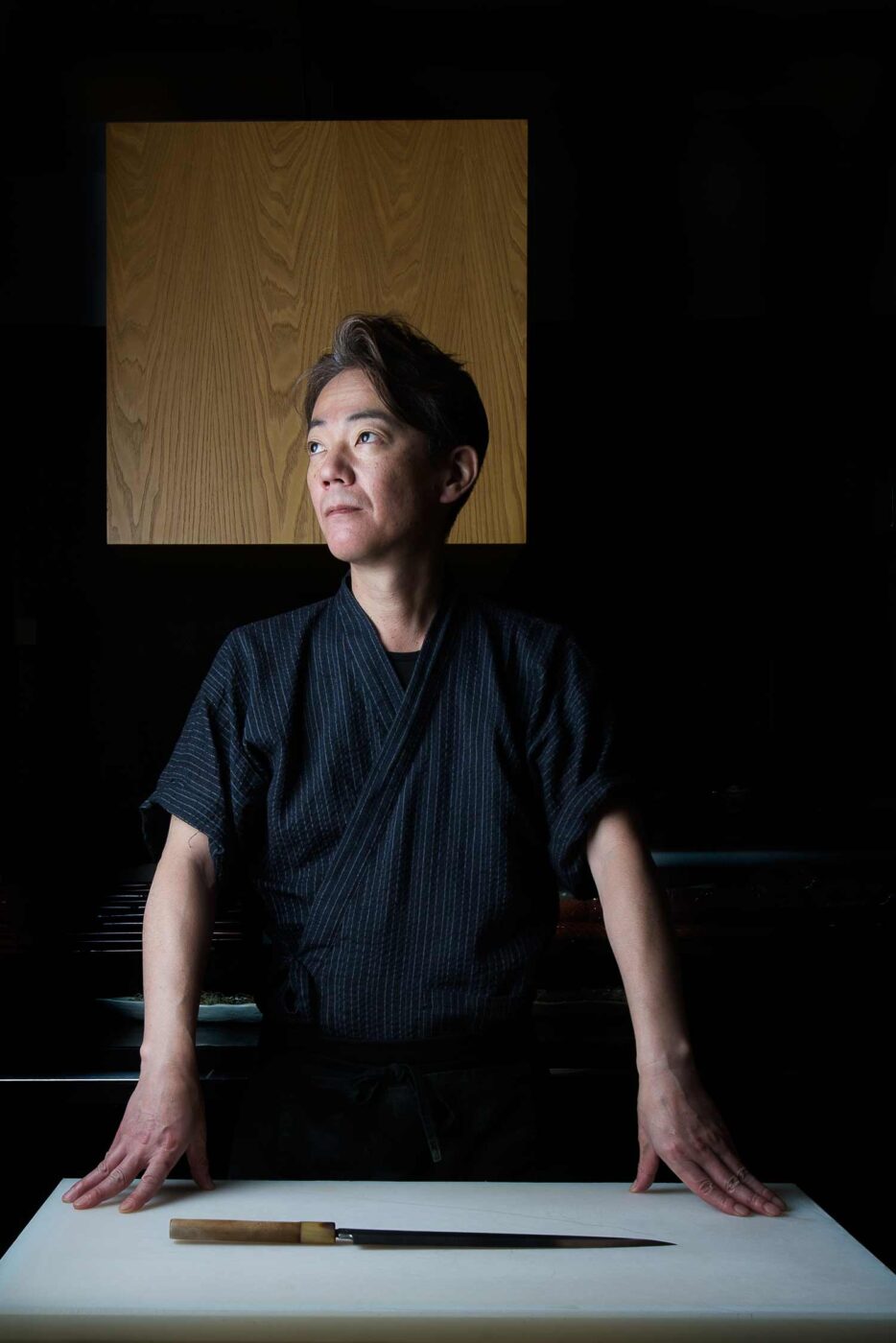
His CV tells us that he began his career at the Akasaka Suntory in his hometown, before packing his bags and setting to work in London and the Netherlands, ultimately ending up beneath the bear and strawberry tree of Madrid’s flag. He has been at Miyama with a knife between his teeth and in his hands since 2007. Sushi, sashimi (which in fact means cut meat), nigiri and tuna stews hold no secrets for this silent conjurer behind his wooden bar. We entrust ourselves to the skill of his hands and fingers.
From Akami to Toro, via Kawara and Hohomiku…
When it is butchered, the tuna is split into two magnificent parts which are then divided into six pieces, a method defined as gomai oroshi. Once the photographer’s camera is satisfied, along with my curiosity to see this samurai at work, there appear before our eyes the two great regions of this titan of the sea: the akami (literally, red meat), indicating the part of the loin (also defined as se), with a meatier tone. Seshimo refers to the peak of the back.
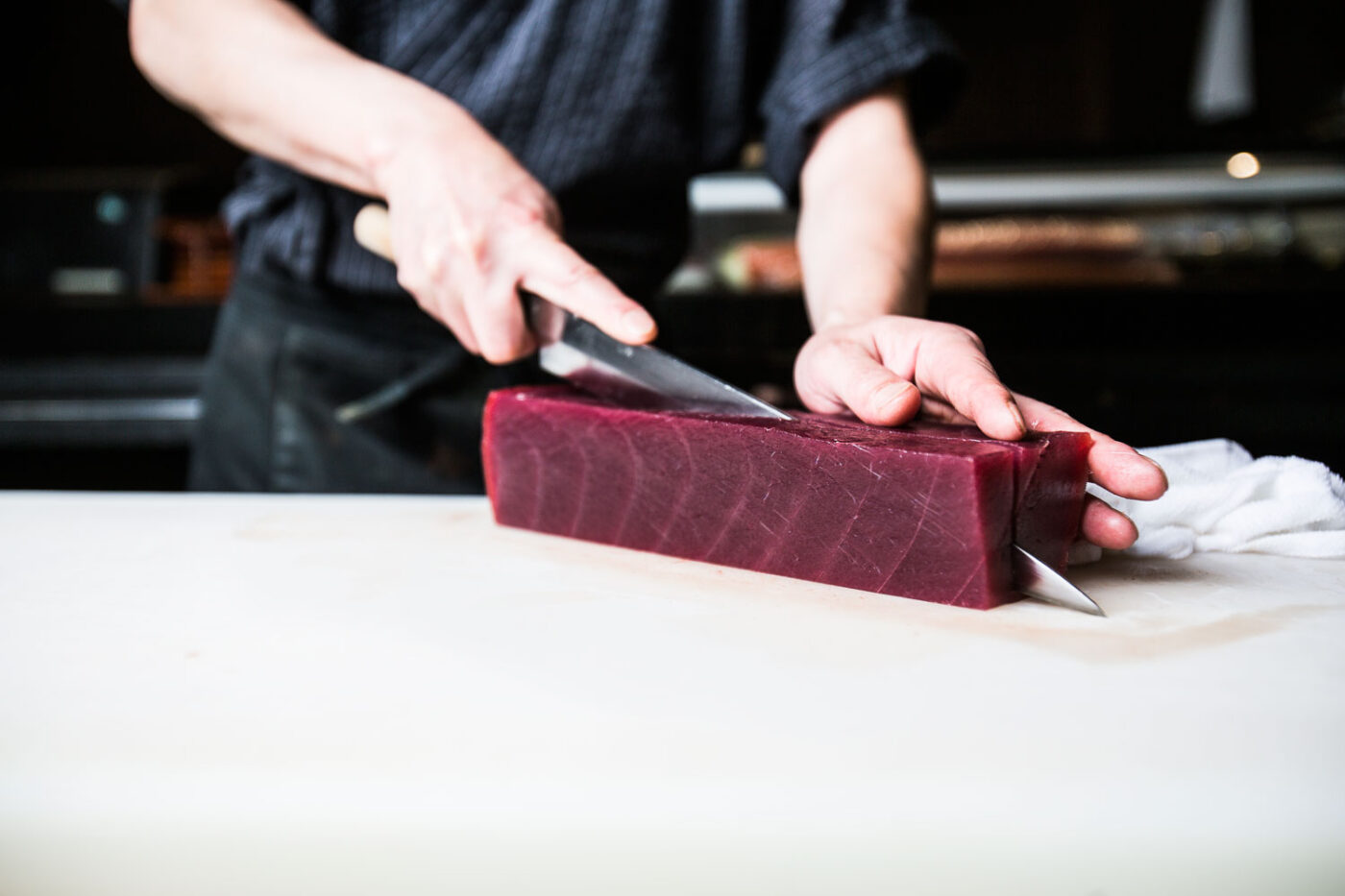
With greater precision than a beef guru gives to the marbling of the meat, our chef fillets the toro, in other words the tuna belly. The prefix hara (abdomen) is a combined to make up the terms harakami, haranaka and harashimo in reference to the forward, central and rear sections of this anatomical area. Junji’s haranaka makes for an outstanding and silky sashimi. The meat found more to the side is chu-toro, with a more pinkish tone.
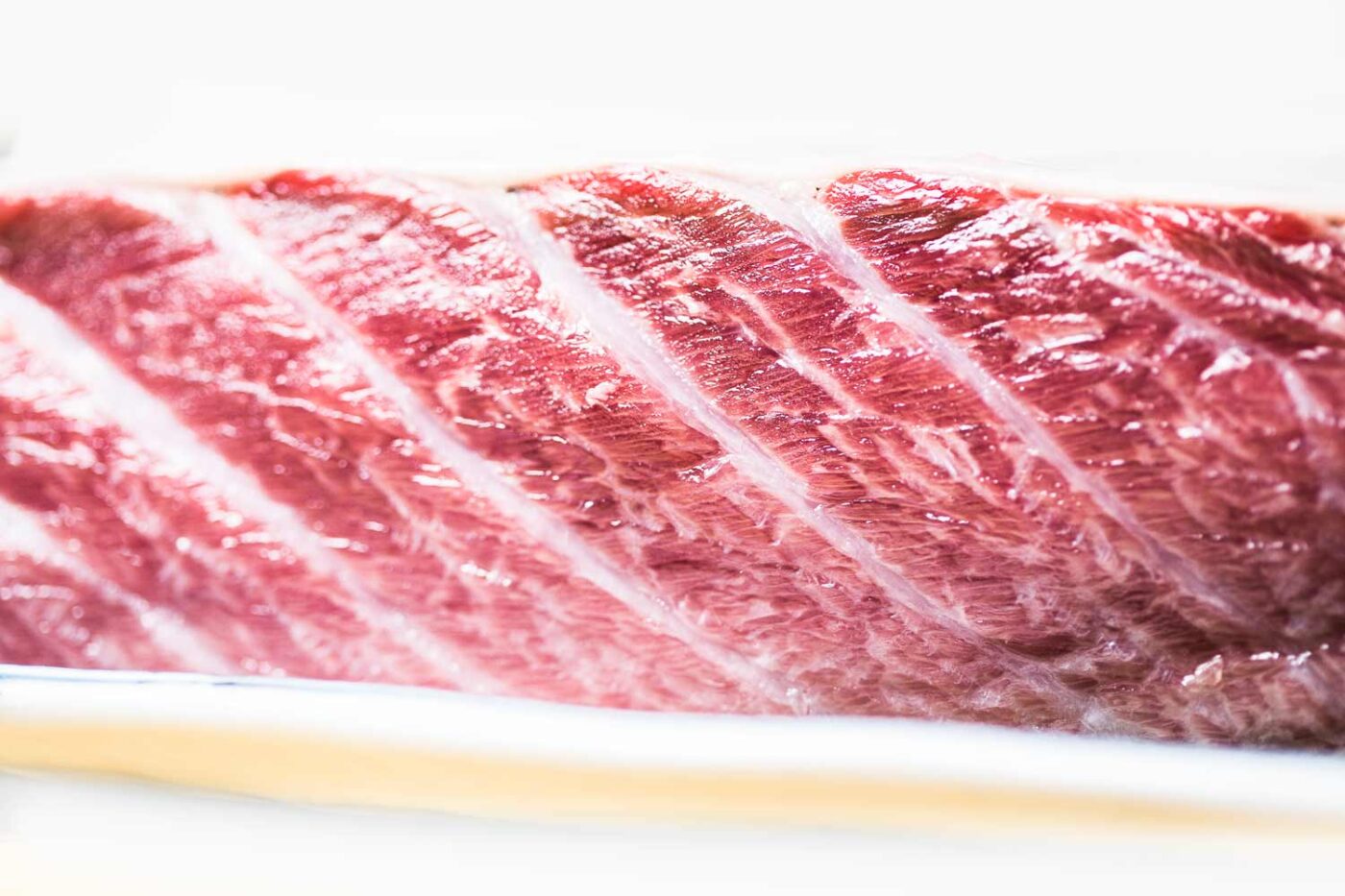
The back cheek (which we call kama) is diced by our chef to conjure up a truly memorable and succulent stew. The parts closest to the spine (hone) are known as tenni, while those further from the backbone are dubbed kawara. Nakahochi defines this backbone meat which I have seen many chefs scoop up with a spoon as if they were emptying a jar of jam.
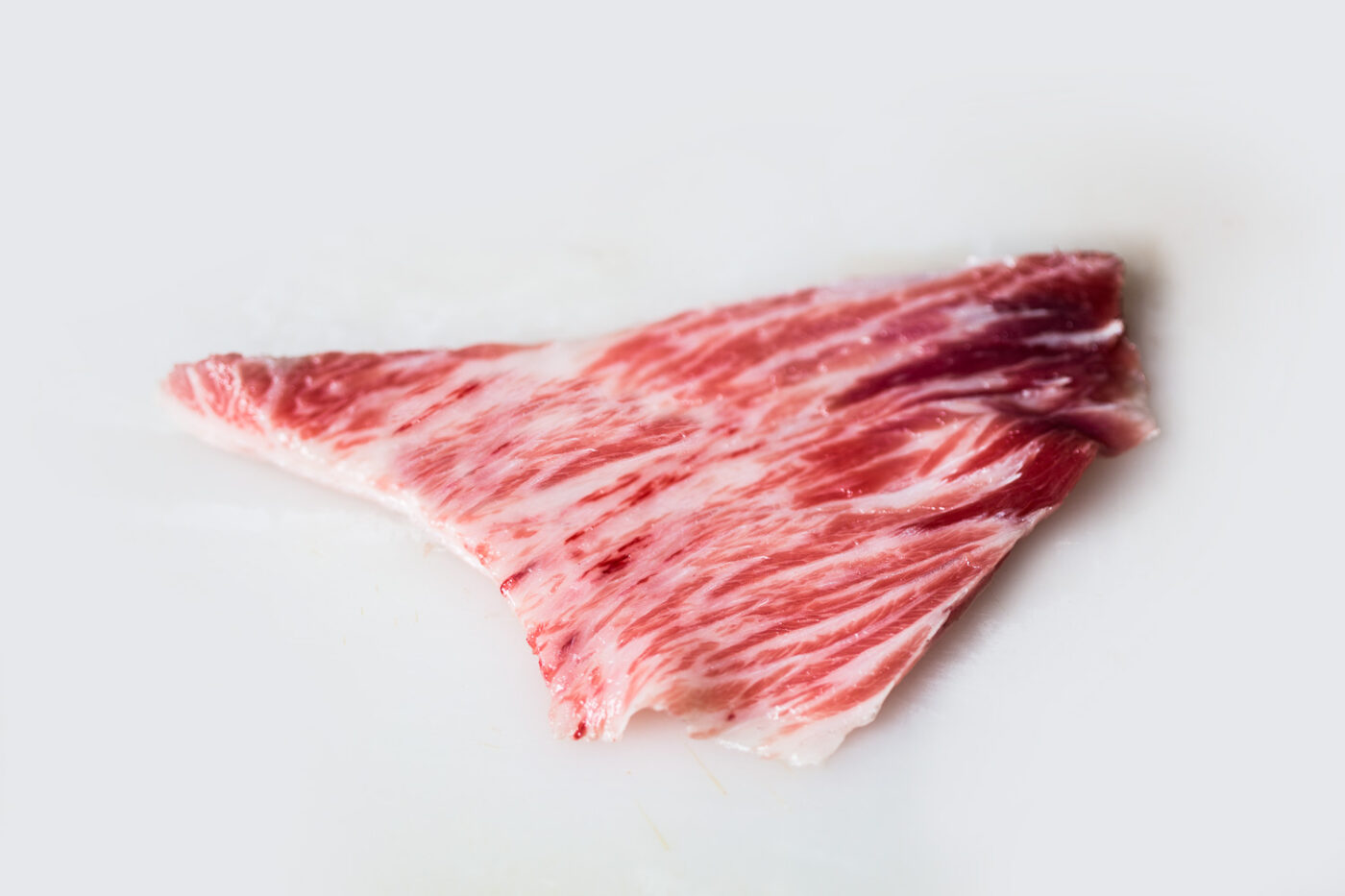
The cheek (or kokotxa – I love the Basque term) is known as ago and the chin meat, hohomiku. Zumiku is the head meat, and medame the great eye that sees everything under the sea… and to which we have already dedicated a post. And now, dear reader, you can sit secure on a hotel bed in Tokyo without feeling like a forlorn Bill Murray when presented with the fundamentals of Japanese tuna terminology.
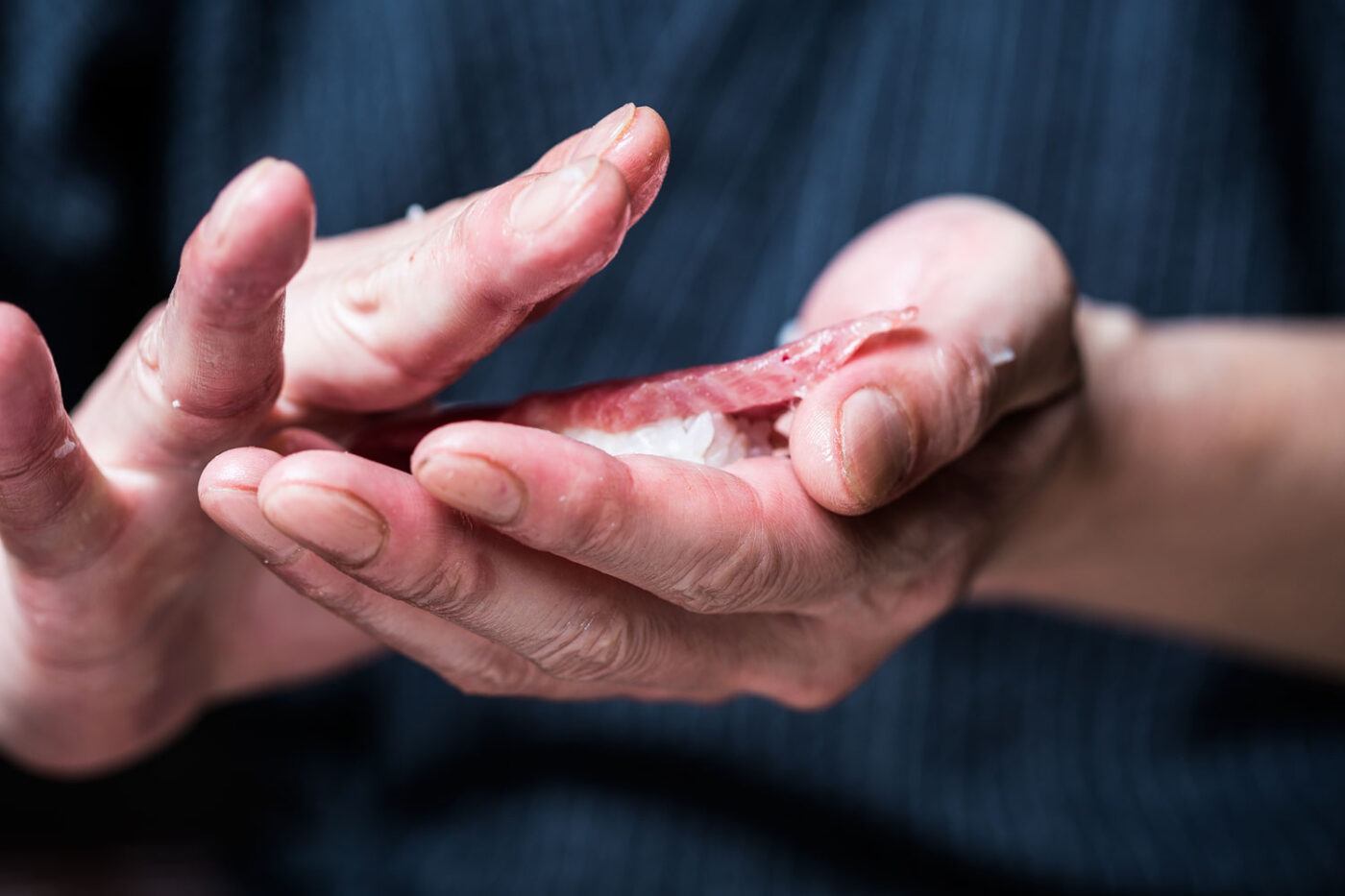
Postscript. If you are ever served tsuna in a restaurant, then be aware that yes, it is tuna… but will never be either bluefin or illustrious, and instead more canned than sitcom laughter.
